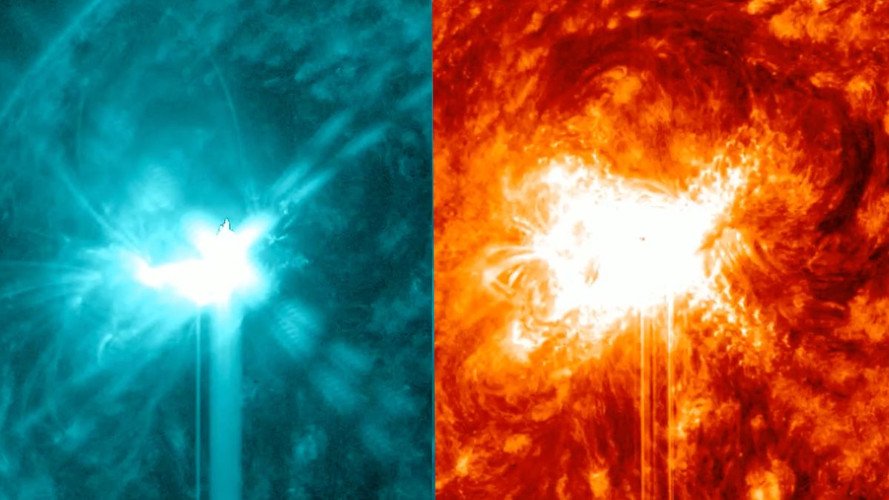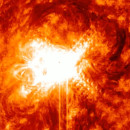 |
|---|
| NASA's Solar Dynamics Observatory captured this image of an X1.8-class solar flare on Feb. 21, 2024. NASA/SDO |
 
|
Powerful twin solar flares erupt from sun as cell phone outages spike across US
Space.com
Thu Feb 22, 2024
Category: Science News
Tens of thousands of outages were reported by major cellular carriers throughout the United States after a pair of powerful solar flares erupted from the sun on February 21 and February 22.
Two outbursts from the sun caused widespread cellphone outages throughout the United States on Thursday (Feb. 22).
Two powerful solar flares erupted from the sun on the evening of Wednesday (Feb. 21) and during the early morning of Thursday (Feb. 22). An X1.8-class flare occurred at 6:07 p.m. ET (2307 GMT) on Feb. 21, and another, an X1.7 class flare, erupted at 1:32 a.m. ET (0632 GMT) on Feb. 22. The flares erupted from a region of the sun that "continues to exhibit strong magnetic complexity," the National Oceanic and Atmospheric Administration (NOAA) wrote in a statement about the events.
"No apparent CMEs resulting from these events have been observed as of the time of this writing, but can not be ruled out," the agency added. Nevertheless, NOAA issued an alert today for a solar radio emission at 6:58 a.m. ET (1158 GMT), which are sometimes joined by strong coronal mass ejections (CME) and solar radiation storms.
Meanwhile, nationwide throughout the United States, widespread cellular outages were reported on Thursday morning following the solar flares. According to The Associated Press, tens of thousands of outages were reported by major cellular carriers such as AT&T, Verzion and T-Mobile.
It remains unclear if the two events are related, but reports of outages appeared to begin around the same time as the solar flares.
The effects of these flares might continue to be felt for days. In a forecast discussion posted at 7:30 a.m. ET (1230 GMT) on Thursday (Feb. 22), NOAA wrote that an "eruptive filament" was seen exploding from the northwest quadrant of the sun's visible disk on Feb. 21.
While most of the energetic material that erupted outward is expected to pass ahead of Earth in its orbit around the sun, a "glancing influence" might be possible on Feb. 25, NOAA added.
Solar flares are caused when magnetic energy builds up in the sun's atmosphere until the star relieves the buildup in an intense burst of electromagnetic radiation.
These outbursts are ranked by size into lettered groups, with X-class flares being the most powerful. Following X-class, there are M-class flares that are 10 times smaller than X-class flares, then C-class, B-class, and finally, A-class flares which are too weak to affect Earth with any significance. Within each of these classes, numbers from 1 to 10 (and beyond, for X-class flares) are used to denote a flare's relative strength.
The sun's activity is currently increasing as it approaches the most active part of its approximately 11-year solar cycle known as the "solar maximum." While solar maximum could mean we see more space weather events such as communications blackouts, and threats to spacecraft in orbit, it could also lead to more widespread auroras worldwide in a silver lining.


 Share your thoughts in the Forum
Share your thoughts in the Forum
